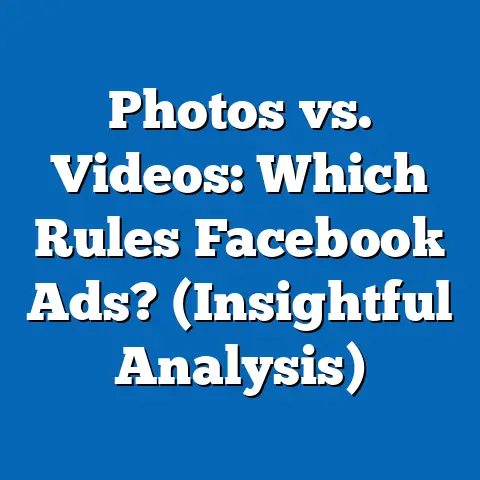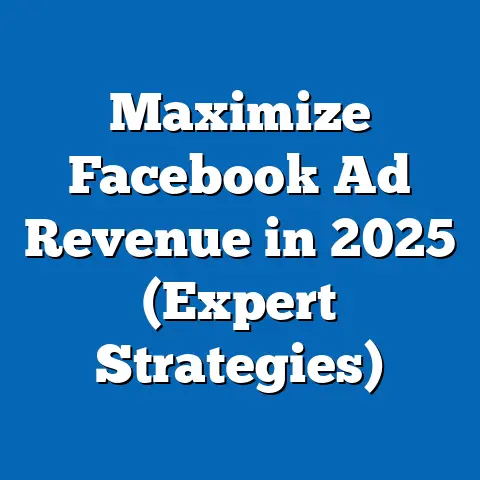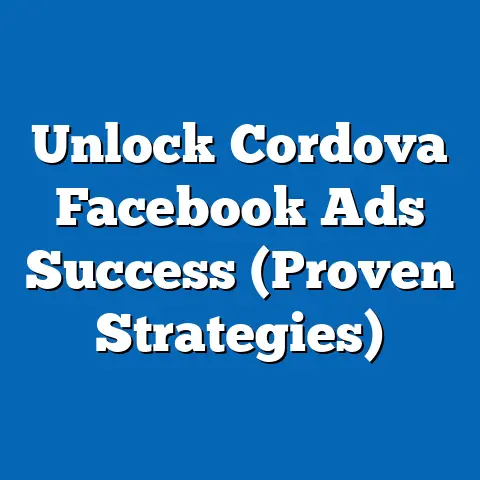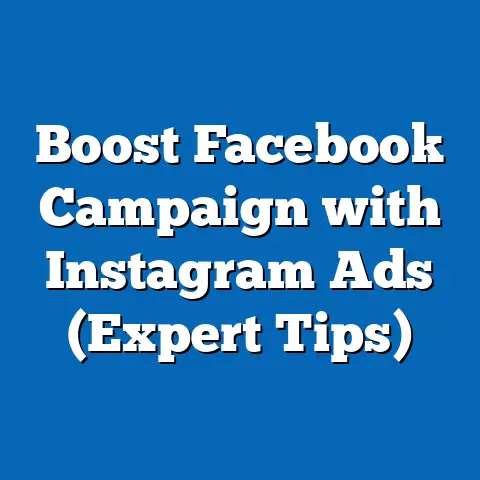Master Frequency Capping in Facebook Ads (Pro Tips Inside)
Have you ever felt like you’re bombarding your potential customers with the same ad over and over? You’re not alone. I’ve been there. In the cutthroat world of Facebook advertising, finding the sweet spot between consistent brand visibility and annoying ad fatigue is a challenge every marketer faces. We pour our hearts and budgets into creating compelling campaigns, but if our audience gets sick of seeing the same message, it all goes down the drain. It’s like shouting the same thing repeatedly, hoping someone will finally listen – eventually, they’ll just tune you out.
Imagine a small business owner, Sarah, who invested a significant chunk of her savings into Facebook ads for her new online boutique. She crafted beautiful ads showcasing her unique clothing line, carefully targeting her ideal customer. Initially, the results were promising – clicks, website visits, and even a few sales. But after a couple of weeks, the engagement plummeted. People started scrolling past her ads without a second glance, and some even left negative comments about seeing the same ad too many times. Sarah was frustrated. She was reaching her target audience, but her message was losing its impact.
The problem? Ad fatigue.
This is where frequency capping comes in as a game-changer. It’s the unsung hero of effective Facebook advertising, allowing us to control how often our ads are shown to the same person within a specific timeframe. Think of it as a volume control for your ad campaigns, preventing you from turning up the noise to the point where your audience simply switches off.
So, let’s get started and unlock the secrets to more engaging, cost-effective, and ultimately, more successful Facebook ad campaigns!
1. Understanding Frequency Capping
Frequency capping, in its simplest form, is a Facebook Ads feature that allows you to limit the number of times an individual user sees your ad within a defined period. It’s like setting a “maximum exposure” limit for your ads, ensuring that you’re not overwhelming your audience with the same message over and over again.
Think of it this way: you wouldn’t want to show the same commercial during every break in a single TV show, right? It would become irritating and likely cause viewers to change the channel. Frequency capping does the same thing for your Facebook ads, preventing that overexposure and potential backlash.
The beauty of frequency capping lies in its flexibility. You can customize the frequency limit and the timeframe to suit your specific campaign goals and audience. For example, you might set a frequency cap of “2 impressions per day” or “5 impressions per week.” The choice is yours, and it’s crucial to carefully consider what works best for your unique situation.
The Psychology of Ad Frequency
Understanding the psychological impact of ad frequency is essential for effective marketing. It’s not just about showing your ad; it’s about how your audience perceives it.
- Initial Exposure: The first time someone sees your ad, it’s likely to pique their interest. They might be curious about your product or service and click to learn more.
- Repetition and Recognition: As they see your ad again, they start to recognize your brand. This familiarity can build trust and credibility.
- Ad Fatigue: However, beyond a certain point, repetition becomes annoying. This is where ad fatigue sets in. Your audience starts to tune out your ad, and it loses its effectiveness.
- Negative Sentiment: In extreme cases, overexposure can lead to negative sentiment. People might associate your brand with annoyance and actively avoid your products or services.
Several psychological principles come into play here:
- The Mere-Exposure Effect: This suggests that people tend to develop a preference for things they are familiar with. However, this effect only works up to a certain point.
- The Inverted-U Hypothesis: This theory proposes that the effectiveness of an ad increases with frequency, up to a certain point, after which it starts to decline.
- Cognitive Overload: Bombarding people with too much information can lead to cognitive overload, making it difficult for them to process your message effectively.
The Consequences of Ignoring Frequency Capping
Failing to implement frequency capping can have serious consequences for your Facebook ad campaigns. I’ve seen it happen time and time again. Here are some of the most common pitfalls:
- Decreased Engagement Rates: As ad fatigue sets in, people are less likely to click on your ads, like your posts, or leave comments. This leads to a decline in your overall engagement rates.
- Increased Negative Feedback: Overexposure can trigger negative feedback, such as people hiding your ads or leaving negative comments. This can damage your brand reputation and lower your ad relevance score.
- Wasted Ad Spend: When people are no longer engaging with your ads, you’re essentially throwing money away. Your ad spend is being used to show ads to people who are already tired of seeing them.
- Damaged Brand Perception: The most severe consequence of ignoring frequency capping is the potential damage to your brand perception. People might start to associate your brand with annoyance and actively avoid your products or services.
Real-World Example: I once worked with a client in the e-commerce industry who was running a retargeting campaign without frequency capping. They were showing the same ad to users who had visited their website but hadn’t made a purchase. Initially, the campaign performed well, driving a significant number of sales. However, after a few weeks, the results started to decline. We analyzed the data and discovered that people were seeing the same ad multiple times per day, leading to ad fatigue and negative feedback. Once we implemented frequency capping, limiting the number of impressions per user per day, the campaign performance rebounded, and we saw a significant increase in ROI.
Key Takeaway: Frequency capping is not just a nice-to-have feature; it’s a necessity for effective Facebook advertising. Ignoring it can lead to decreased engagement rates, wasted ad spend, and even damage to your brand perception.
2. The Importance of Frequency Capping in Facebook Ads
Now that we understand what frequency capping is and the potential consequences of ignoring it, let’s dive deeper into why it’s so crucial for effective Facebook ad campaigns. In my experience, frequency capping is the key to unlocking sustainable success on the platform.
Maintaining User Interest
One of the primary reasons why frequency capping is so important is that it helps you maintain user interest. In the fast-paced world of social media, attention spans are short, and users are constantly bombarded with information. If you show them the same ad too many times, they’re likely to tune it out.
Frequency capping allows you to keep your message fresh and engaging by preventing overexposure. By limiting the number of times an individual user sees your ad, you ensure that they’re more likely to pay attention when they do see it.
Optimizing Ad Spend
Another key benefit of frequency capping is that it helps you optimize your ad spend. When you’re showing ads to people who are already tired of seeing them, you’re essentially wasting money. Your ad spend is being used to deliver impressions that are unlikely to result in clicks or conversions.
Frequency capping allows you to focus your ad spend on reaching new potential customers or re-engaging with users who haven’t yet converted. By limiting the number of impressions per user, you can stretch your budget further and achieve better results.
Improving Overall Campaign Performance
Ultimately, frequency capping contributes to improved overall campaign performance. By maintaining user interest and optimizing ad spend, you’re more likely to achieve your campaign goals, whether they’re brand awareness, lead generation, or sales.
When your ads are engaging and relevant, people are more likely to click on them, visit your website, and make a purchase. This leads to higher conversion rates, lower cost per acquisition (CPA), and a better return on investment (ROI).
The ROI Benefits of Frequency Capping
The ROI benefits of implementing frequency capping can be significant. Studies have shown that campaigns with optimized frequency capping can achieve:
- Higher Click-Through Rates (CTR): By preventing ad fatigue, you can maintain a higher CTR, which means more people are clicking on your ads.
- Lower Cost Per Click (CPC): A higher CTR can lead to a lower CPC, as Facebook rewards ads that are engaging and relevant.
- Higher Conversion Rates: When people are more engaged with your ads, they’re more likely to convert, whether that means signing up for your email list, requesting a demo, or making a purchase.
- Lower Cost Per Acquisition (CPA): Higher conversion rates can lead to a lower CPA, which means you’re spending less money to acquire each new customer.
- Improved Return on Ad Spend (ROAS): Ultimately, all of these factors contribute to an improved ROAS, which means you’re getting more value out of your ad spend.
Industry Benchmark: According to a study by Nielsen, the optimal ad frequency for brand awareness campaigns is typically between 3 and 5 impressions per week. However, this can vary depending on your industry, target audience, and campaign goals.
Contributing to a Positive User Experience
Finally, frequency capping contributes to a positive user experience on social media platforms. No one wants to be bombarded with the same ad over and over again. It’s annoying and can lead to negative sentiment towards the brand.
By implementing frequency capping, you show respect for your audience’s time and attention. You’re not trying to force your message on them; you’re simply presenting it in a way that’s engaging and relevant. This can lead to a more positive relationship with your audience and a stronger brand reputation.
Key Takeaway: Frequency capping is not just about preventing ad fatigue; it’s about optimizing your ad spend, improving campaign performance, and contributing to a positive user experience. It’s an essential tool for any marketer who wants to achieve sustainable success on Facebook.
3. How to Set Up Frequency Capping in Facebook Ads
Now that we understand the importance of frequency capping, let’s get practical and walk through the steps of setting it up in Facebook Ads Manager. I’ll break it down into easy-to-follow instructions, complete with tips and considerations along the way.
Step 1: Create or Edit Your Ad Set
Frequency capping is set at the ad set level, so you’ll need to either create a new ad set or edit an existing one.
- Creating a New Ad Set: In Ads Manager, click the “+ Create” button and choose your campaign objective. Then, proceed to the ad set level.
- Editing an Existing Ad Set: Select your campaign, then click on the ad set you want to modify.
Step 2: Navigate to the “Optimization & Delivery” Section
Within your ad set settings, scroll down to the “Optimization & Delivery” section. This is where you’ll find the frequency capping options.
Step 3: Set Your Frequency Cap
In the “Optimization & Delivery” section, you’ll see a setting called “Impression.” This is where you set your frequency cap.
- Click on “Show Advanced Options.” This will reveal the frequency capping settings.
- Enter your desired frequency cap. This is the maximum number of times you want an individual user to see your ad within a specific timeframe. For example, you might enter “2” to limit impressions to two per timeframe.
- Choose your timeframe. This is the period over which the frequency cap will be applied. You can choose from options like “per day,” “per week,” or “per month.”
Example: Let’s say you want to limit impressions to 2 per week. You would enter “2” in the frequency cap field and select “per week” from the timeframe dropdown.
Step 4: Consider Your Campaign Objectives
The optimal frequency cap will vary depending on your campaign objectives. Here are some general guidelines:
- Brand Awareness Campaigns: These campaigns aim to increase brand recognition. A slightly higher frequency cap might be appropriate (e.g., 3-5 impressions per week).
- Lead Generation Campaigns: These campaigns aim to collect leads. A moderate frequency cap might be effective (e.g., 2-3 impressions per week).
- Conversion Campaigns: These campaigns aim to drive sales or other conversions. A lower frequency cap might be necessary to avoid ad fatigue (e.g., 1-2 impressions per week).
- Retargeting Campaigns: These campaigns target users who have already interacted with your brand. A slightly higher frequency cap might be acceptable, as these users are already familiar with your products or services (e.g., 3-5 impressions per week).
Step 5: Test Your Frequency Cap Settings
The best way to determine the optimal frequency cap for your campaigns is to test different settings. You can do this by creating multiple ad sets with varying frequency caps and comparing their performance.
- Create multiple ad sets. Duplicate your existing ad set and modify the frequency cap settings in each one.
- Track your results. Monitor the performance of each ad set, paying attention to metrics like CTR, CPC, conversion rates, and CPA.
- Adjust your settings. Based on your results, adjust your frequency cap settings to optimize performance.
Pro Tip: Consider using dynamic creative to keep your ads fresh and engaging, even if you’re showing them multiple times to the same user. Dynamic creative allows you to automatically test different combinations of headlines, images, and calls to action to find the most effective variations.
Step 6: Monitor and Optimize
Setting your frequency cap is not a one-time task. It’s essential to monitor your campaign performance regularly and adjust your settings as needed.
- Keep an eye on your metrics. Pay attention to metrics like CTR, CPC, conversion rates, and CPA.
- Look for signs of ad fatigue. If you see a decline in engagement rates or an increase in negative feedback, it might be time to lower your frequency cap.
- Adjust your settings accordingly. Don’t be afraid to experiment with different frequency cap settings to find what works best for your audience.
Key Takeaway: Setting up frequency capping in Facebook Ads Manager is a straightforward process. However, it’s essential to carefully consider your campaign objectives, test different settings, and monitor your results regularly to optimize performance.
4. Pro Tips for Mastering Frequency Capping
Now, let’s move on to the good stuff – the pro tips that will help you truly master frequency capping in Facebook Ads. These are the strategies I’ve developed over years of experience, and they can make a significant difference in your campaign performance.
Tip 1: Utilize A/B Testing to Determine the Ideal Frequency Levels
I mentioned A/B testing earlier, but it’s so important that it deserves its own dedicated section. A/B testing is the key to unlocking the optimal frequency cap for your campaigns.
- Create multiple ad sets with varying frequency caps. For example, you might create one ad set with a frequency cap of 1 impression per week, another with 2 impressions per week, and a third with 3 impressions per week.
- Ensure all other settings are the same. To accurately compare the performance of each ad set, it’s essential to keep all other settings consistent, including targeting, budget, and creative.
- Track your results. Monitor the performance of each ad set, paying attention to metrics like CTR, CPC, conversion rates, and CPA.
- Analyze your data. After a sufficient period (e.g., one week or one month), analyze your data to determine which frequency cap performed the best.
- Adjust your settings. Based on your analysis, adjust your frequency cap settings to optimize performance.
Pro Tip: Use Facebook’s built-in A/B testing tool to simplify the process. This tool allows you to easily create and manage your A/B tests and track your results in a single dashboard.
Tip 2: Segment Audiences Based on Engagement History to Tailor Frequency Settings
Not all users are created equal. Some users might be highly engaged with your brand, while others might be completely new to your products or services. It’s essential to tailor your frequency settings to match the engagement history of each audience segment.
- Create custom audiences based on engagement history. For example, you might create a custom audience of users who have visited your website, users who have liked your Facebook page, and users who have engaged with your previous ads.
- Set different frequency caps for each audience segment. Users who are highly engaged with your brand might be more receptive to a higher frequency cap, while users who are new to your brand might require a lower frequency cap.
Example: You might set a frequency cap of 3 impressions per week for users who have visited your website and 1 impression per week for users who have never interacted with your brand before.
Tip 3: Leverage Custom Audiences and Lookalike Audiences to Refine Ad Targeting
Custom audiences and lookalike audiences are powerful tools for refining your ad targeting and improving the effectiveness of your frequency capping strategies.
- Custom Audiences: These audiences allow you to target specific groups of users based on their email addresses, phone numbers, or website activity.
- Lookalike Audiences: These audiences allow you to target users who are similar to your existing customers or website visitors.
By using custom audiences and lookalike audiences, you can ensure that your ads are being shown to the most relevant users, which can improve engagement rates and reduce ad fatigue.
Pro Tip: Create a lookalike audience based on your highest-value customers. These are the users who are most likely to convert, and they might be more receptive to a slightly higher frequency cap.
Tip 4: Integrate Frequency Capping with Other Ad Strategies Like Retargeting to Enhance User Journey
Frequency capping works best when it’s integrated with other ad strategies, such as retargeting. Retargeting allows you to show ads to users who have already interacted with your brand, such as visiting your website or adding items to their cart.
- Use retargeting to re-engage with users who haven’t converted. Show them ads that remind them of your products or services and encourage them to complete their purchase.
- Use frequency capping to prevent overexposure. Set a frequency cap that’s appropriate for retargeting campaigns (e.g., 3-5 impressions per week).
- Tailor your messaging to the user’s stage in the customer journey. Show them ads that are relevant to their previous interactions with your brand.
Example: If a user added an item to their cart but didn’t complete the purchase, you might show them an ad that reminds them of the item and offers a discount to encourage them to complete the transaction.
Key Takeaway: Mastering frequency capping requires a combination of data analysis, audience segmentation, and integration with other ad strategies. By following these pro tips, you can optimize your frequency settings and achieve better results with your Facebook ad campaigns.
5. Analyzing and Adjusting Frequency Capping Strategies
Setting up frequency capping is just the first step. The real magic happens when you start analyzing your results and making adjustments to optimize your strategies. I can’t stress enough how important it is to constantly monitor your campaigns and adapt to changing trends and user behavior.
The Importance of Ongoing Analysis and Optimization
Facebook advertising is not a “set it and forget it” activity. It requires ongoing analysis and optimization to ensure that you’re getting the best possible results. This is especially true for frequency capping, as the optimal settings can change over time.
- User behavior can change. As users become more familiar with your brand, their tolerance for ad frequency might change.
- The competitive landscape can change. If your competitors are increasing their ad frequency, you might need to adjust your settings to stay competitive.
- Your campaign goals can change. As your business evolves, your campaign goals might change, which can affect the optimal frequency cap.
Using Facebook Insights and Analytics to Monitor Ad Performance
Facebook Insights and Analytics provide a wealth of data that you can use to monitor your ad performance and optimize your frequency capping strategies.
- Reach and Frequency: These metrics show you how many people you’re reaching and how often they’re seeing your ads.
- CTR: This metric measures the percentage of people who click on your ads.
- CPC: This metric measures the average cost you’re paying for each click.
- Conversion Rate: This metric measures the percentage of people who take a desired action after clicking on your ads (e.g., signing up for your email list, making a purchase).
- CPA: This metric measures the average cost you’re paying to acquire each new customer.
- Negative Feedback: This metric shows you how many people are hiding your ads or leaving negative comments.
By monitoring these metrics, you can identify trends and patterns that can help you optimize your frequency capping strategies.
Pro Tip: Use Facebook’s reporting tools to create custom reports that track the metrics that are most important to you. This will make it easier to monitor your ad performance and identify areas for improvement.
Key Performance Indicators (KPIs) to Track
When assessing the effectiveness of your frequency capping strategies, here are some key performance indicators (KPIs) to track:
- Reach per Frequency: This KPI measures the number of unique users you’re reaching for each impression. A lower reach per frequency indicates that you’re showing your ads to the same people too many times.
- CTR vs. Frequency: This KPI compares your CTR at different frequency levels. If your CTR is declining as frequency increases, it might be time to lower your frequency cap.
- CPA vs. Frequency: This KPI compares your CPA at different frequency levels. If your CPA is increasing as frequency increases, it might be time to lower your frequency cap.
- Negative Feedback Rate: This KPI measures the percentage of users who are hiding your ads or leaving negative comments. A high negative feedback rate indicates that you’re showing your ads too frequently.
Example: Let’s say you’re running a brand awareness campaign and you notice that your reach per frequency is declining, your CTR is decreasing, and your negative feedback rate is increasing. This indicates that you’re showing your ads to the same people too many times, and it’s time to lower your frequency cap.
Key Takeaway: Analyzing and adjusting your frequency capping strategies is an ongoing process. By monitoring your ad performance, tracking key performance indicators, and making adjustments as needed, you can optimize your frequency settings and achieve better results with your Facebook ad campaigns.
6. Common Mistakes to Avoid with Frequency Capping
Even with a solid understanding of frequency capping, it’s easy to fall into common pitfalls. I’ve seen even experienced marketers make these mistakes, so it’s crucial to be aware of them and take steps to avoid them.
Mistake 1: Setting Caps Too Low
One of the most common mistakes is setting frequency caps too low. While it’s important to avoid overexposure, setting your caps too low can prevent you from reaching your target audience effectively.
- You might not reach enough people. If your frequency cap is too low, you might not reach enough people to achieve your campaign goals.
- You might not build brand awareness. It takes multiple impressions for users to remember your brand and recognize your products or services.
- You might miss out on conversions. Some users need to see your ads multiple times before they’re ready to convert.
Solution: Test different frequency cap settings to find the optimal balance between reach and frequency. Consider your campaign objectives and target audience when setting your caps.
Mistake 2: Failing to Adjust for Different Ad Formats
Different ad formats have different levels of intrusiveness. For example, a video ad that appears in the middle of a user’s news feed is more intrusive than a small image ad that appears in the sidebar.
- More intrusive ad formats might require lower frequency caps. Users might be more likely to experience ad fatigue with more intrusive ad formats.
- Less intrusive ad formats might allow for higher frequency caps. Users might be more tolerant of less intrusive ad formats.
Solution: Adjust your frequency caps based on the ad formats you’re using. Consider using lower frequency caps for more intrusive ad formats and higher frequency caps for less intrusive ad formats.
Mistake 3: Ignoring the Customer Journey
The customer journey is the path that users take from initial awareness to final conversion. It’s essential to consider the customer journey when setting your frequency caps.
- Users who are early in the customer journey might require lower frequency caps. They might be more sensitive to ad fatigue.
- Users who are further along in the customer journey might be more receptive to higher frequency caps. They might be closer to converting and need a final push.
Solution: Segment your audiences based on their stage in the customer journey and set different frequency caps for each segment.
Mistake 4: Not Monitoring and Optimizing
As I mentioned earlier, Facebook advertising is not a “set it and forget it” activity. It requires ongoing monitoring and optimization to ensure that you’re getting the best possible results.
- User behavior can change.
- The competitive landscape can change.
- Your campaign goals can change.
Solution: Monitor your ad performance regularly and adjust your frequency cap settings as needed.
Key Takeaway: Avoiding these common mistakes can help you maximize the effectiveness of your frequency capping strategies and achieve better results with your Facebook ad campaigns.
7. Conclusion
Mastering frequency capping in Facebook Ads is not just about setting a limit on how often your ads are shown. It’s about understanding the psychology of your audience, optimizing your ad spend, and creating a positive user experience. It’s about finding the sweet spot between visibility and annoyance, ensuring that your message is heard without being overwhelming.
Throughout this guide, I’ve shared my insights and experiences, providing you with practical tips and strategies to help you master frequency capping. I’ve walked you through the steps of setting up frequency capping in Facebook Ads Manager, shared pro tips for optimizing your settings, and highlighted common mistakes to avoid.
Remember, frequency capping is not a one-size-fits-all solution. It requires ongoing analysis, testing, and optimization to ensure that you’re getting the best possible results. Don’t be afraid to experiment with different settings and adapt your strategies as needed.
I encourage you to implement the pro tips provided in this guide and continuously refine your strategies to enhance ad effectiveness and user engagement. By mastering frequency capping, you can unlock the full potential of Facebook advertising and achieve your business goals.
Now, I’d love to hear from you. What are your experiences with frequency capping? What strategies have you found to be most effective? Share your insights in the comments below and let’s learn from each other.
And if you found this guide helpful, please share it with your colleagues and friends. Together, we can help each other master the art of Facebook advertising!






